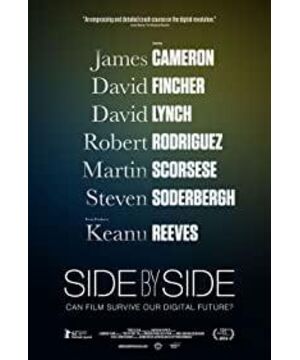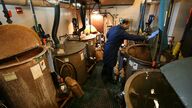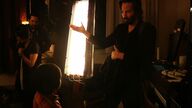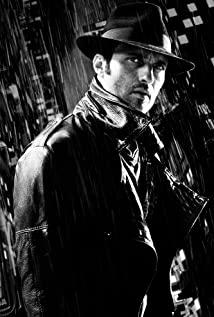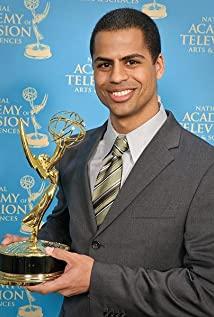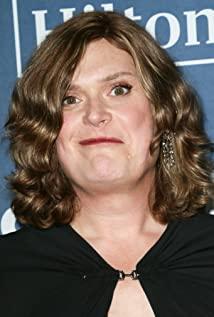The dispute between film film and digital film is mainly in the following major aspects:
【Film shooting process】
1. In terms of texture, the dynamic range of the film is wider, and the graininess is more realistic. But the numbers are bright and too bright, and dark and too dark, and the graininess is distorted.
Second, the late color adjustment. Film: DP photography directors should pay special attention to color, composition, angle and other image issues, such as the feeling of light on the skin. Numbers: How do you want to shoot, and you can’t do it again, so there are often interruptions, everyone can judge, and it weakens the rights of DP.
3. Shooting cost and time. Film: The cost is high, and the picture taken is usually seen the next day. On the one hand, it is impossible to fully control the effect of the picture at that time, but on the other hand, it is unexpectedly surprised by the unique texture. Figures: The cost is very cheap. You don’t need to consider the cost of the film. The cost of the film and the reduced budget can give the director more freedom and greatly increase the number of movies produced. However, in the digital early days ("Family Banquet") It was the first step of digital film, in 1998, DV shooting), the digital picture is very bad.
4. Film language-the way of filming. Film: Compared to digital, it is bulky and inflexible, and the shooting angle is more limited. Digital: Through a flexible and portable digital camera, more movement, action and emotion can be conveyed. For example, the emotional characteristics of a handheld camera can create a kind of running that brings about the shaking of the picture and triggers various emotions, thus changing many in the film age. Aspects, such as the way the actors perform, the director's ability to improvise.
5. The way the actors perform. Film: The filming process cannot be interrupted at will. Unless CUT, all people, including actors, must devote themselves to it, because the money burns as soon as the film starts. Numbers: The director can guide the actors during the filming process, which destroys the originally good atmosphere and interrupts the actor's emotions and asks to come again. However, in many cases, the touching images are often short-lived and hard to come by.
Sixth, the multi-angle shooting of the lens. Film: Relative to digital, you can only shoot at one or two different angles at the same time. If you need to shoot at multiple angles, you need to repeat the performance you just performed. Numbers: You can set up 10 lenses to shoot at different positions at the same time, saving cost and time, and giving you a lot of freedom in shooting methods.
[Editing aspect]
1. Editing. Film: A long bundle of films, edited with scissors, is time consuming, the cost of editing equipment is high, and the cost of labor is high; at the same time, the level of editors is higher, because editing is to connect two different films with scissors. At the same time, because the film is very expensive, the editor will think more about the picture, but the number in this respect greatly reduces the editing ability requirements of the editor. Figures: It is all done on the computer, time and labor costs are greatly reduced, and there is no need to wash it, saving a lot of money. (Since the digital editing machine appeared in PS, film can be converted into digital, and then edited with a computer, in the late 1980s)
2. CGI special effects. Film: The requirements for photography skills, lighting technology, fine models and printing technology are extremely high. They are used to change the reality and enhance the viewing experience. Special effects are created by stacking films one by one, but the process consumes a lot of film. Then this physical film editing method was replaced by the later "change film to digital format", which can save a lot of money. Digital: Use computer to synthesize special effects, how you want to do it, and even create a real sci-fi world for you, just like all the forest parts in "Avatar" are CG effects.
[Toning aspect]
1. After the film is shot, edited, and added with visual effects, the colorist or photometricist in the photofinishing factory continues to adjust the picture.
Film: The negative film of the photochemical era needs to go through the process of development and printing. In the era of black-and-white film, the optographer determines the lightness and darkness of the picture by soaking the film for the length of time. In the color film stage, the color perception of the picture is adjusted through the limited red, green, blue and brightness buttons to keep the color of different pictures Unanimous. Digital color grading was first applied to short films, such as music videos and commercials. Digital: Same as the late film era. The colorist or the optician will have conflicts with DP. Who is the last person to decide the picture?
[Screening aspect]
1. Copying and screening. Film: Many times, due to different projectors, different light intensities, and other different variables, all these are left to the projectionist to deal with, sound, pictures, etc., making the final picture presented to the audience different. Digital: In 1999, there were only 4 digital projectors in the United States. In 2011, they were all digitalized. Since 1999, digitization has begun to develop, and the development and production of digital cameras using CCD or CMOS photosensitive have continued to advance. Since 2005, the American company Panavision, which is a pioneer in the manufacture of film cameras, has produced large-scale sensors with CCD. "Creation" digital digital camera, so the first 35mm CCD sensor full-frame digital camera applied to film shooting was born. It obtains a depth-of-field effect similar to film, but the dynamic range is flawed (picture latitude, true light-dark transition Effect). In 2007, RED Digital Camera Manufacturing Company developed RED ONE (4K), which greatly improved the resolution from SD-HD-2K-4K. In 2009, the Oscar was awarded for the first time to "Slumdog Millionaire" filmed with a digital camera, and digital movies began to gain widespread recognition. "The Enemy of the Public", "District Nine", and "Tetro" were all shot with SONY F23; "Informer" RED ONE, "Avatar" is not limited to SONY F950.
Second, the use of CGI special effects. Film: It can retain the real effect of the original object display. Digital: Computer synthesis, lack of realism, but Cameron said which green sceneries in the film era are considered real? CGI can give directors more ways of expression.
3. The era of digital cameras taking off. The RED EPIC Alisa camera (4K) does a better job in dynamic range, the movies "The Girl with the Dragon Tattoo" 2011, "The Amazing Spider-Man" 2011, and "The Hobbit" 2011. ARRI Camera Manufacturing Company’s Alisa camera, produced in 2010, filmed in the movies "Hugo", "Desperate Driving" 2011, "Depression" 2011, and "Time Planning Bureau" 2011.
Fourth, the film transportation issue. Film: The bulky film has to be transported to theaters all over the country, where the transportation cost is very high; and in the copying process, it is almost not the original negative film and faces the distortion of the copied film. Digital: In theaters with digital projectors, the copy can be copied unlimited times without distortion, because it reproduces exactly the same film, and there is no problem of film distortion.
[The conflict between traditional cinema and the rising Internet]
1. Screening environment. Traditional cinema: Connaught big screen. Internet: All kinds of screening equipment, mobile phones, computers, tablets, etc., are increasingly taking up people's viewing time.
2. Shooting equipment. Traditional film: Use professional cameras, such as RED, ARRI, etc. Internet: In the era when everyone can make movies, the cost is low. As long as you have Canon, Nikon, Sony and other miniature photography, you can do it. "Micro Furniture", 2010, Canon 7D. However, in the second decade of the 21st century, there are still many films shot on film, such as "War Horse" 2011, "Tree of Life" 2011, "Mission Impossible Ghost Protocol" 2011, "Small Stone" 2011, "The Great Artist" "2011, "The Dark Knight Rises" 2011.
[Video storage problem]
1. Movie storage problem. Film: Easily store it for decades and then take it out for copying, and there is no problem with projection, etc., and the maintenance cost is low. Figures: If you store it for several years without maintenance, you will encounter various problems when you take it out, such as picture distortion or loss of movie content, and the maintenance cost is high.
【At last】
Even if the film film reached its peak in 2007, and the digital film has risen strongly from the dawn of the new century, no matter what material is used for photography, it will eventually return to one thing: if you do it with your heart, if you have sincerity and sensitivity , Then it doesn't matter what you do with it. (Everything comes down to one thing.If you do something with your heart. If you do something that you are convinced of and feel about it. It doesn't matter what you're using.)
View more about Side by Side reviews


